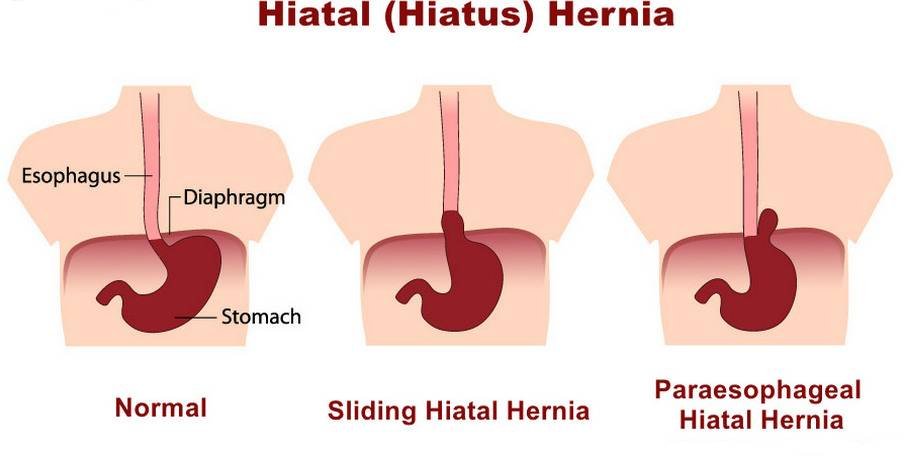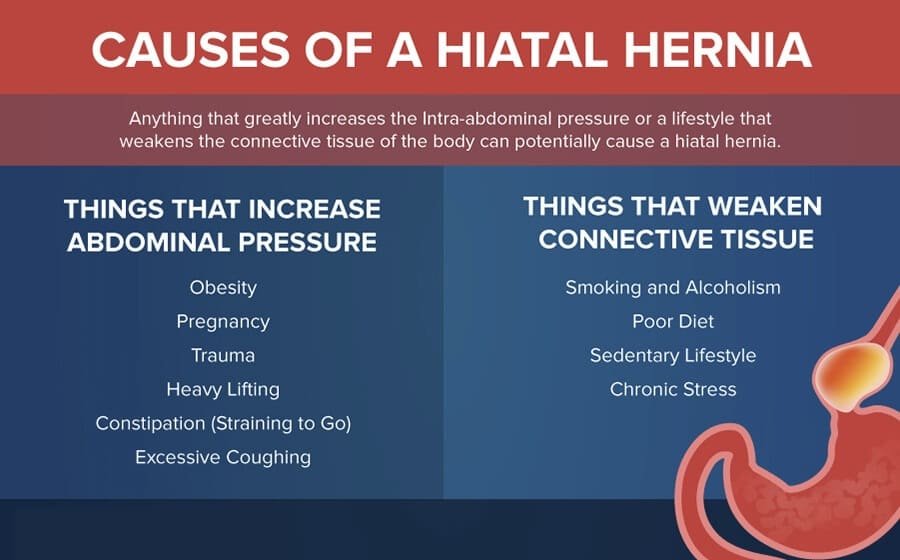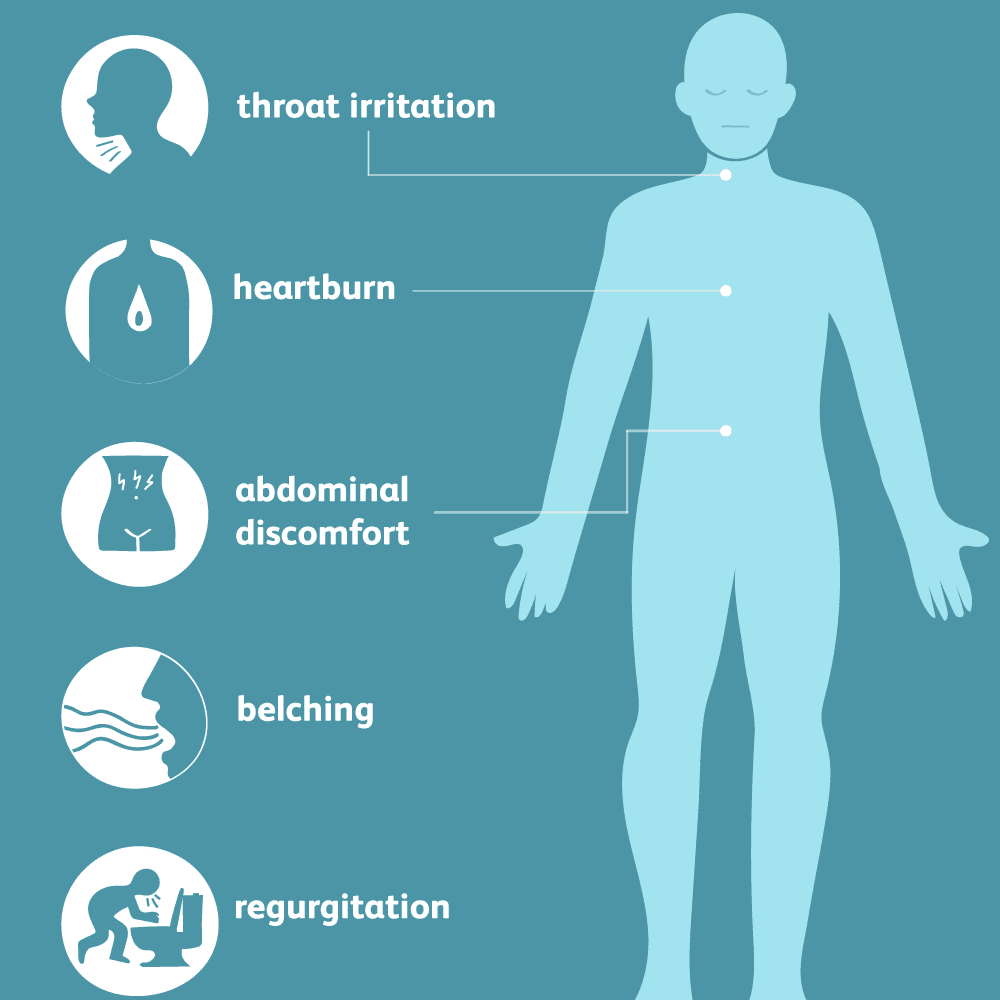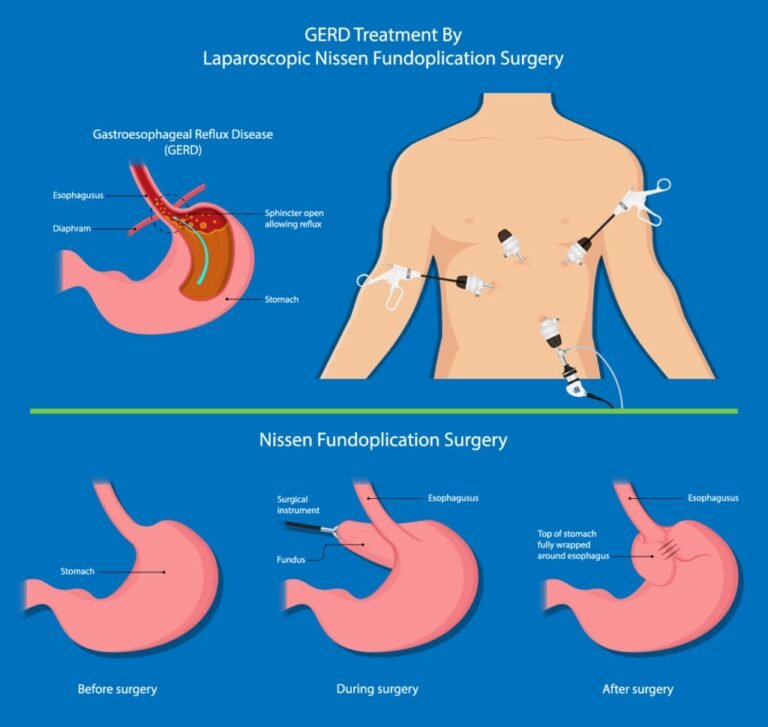Hiatus Hernia & GERD
What is a hiatal hernia?
A hiatal hernia occurs when the upper part of the stomach pushes through an opening in the diaphragm and into the chest cavity. The diaphragm is the thin muscle wall that separates the chest cavity from the abdomen. The opening in the diaphragm is where the oesophagus and stomach join.
Who is at risk for developing a hiatal hernia?
Obese
Smokers
Both sexes

Causes
- Coughing.
- Vomiting.
- Straining during a bowel movement.
- Heavy lifting.
- Physical strain.


Symptoms:
Gastroesophageal reflex disease (GERD): Digestive juices move from the stomach back into the oesophagus. GERD can occur with or without Hiatal hernia and the vice versa.
- Heartburn.
- Bitter or sour taste in the back of the throat.
- Bloating and belching.
- Discomfort or pain in the stomach or oesophagus.
- Chest pain.

Diagnosis And Test
- Barium swallow
- UGI endoscopy
- Oesophageal manometric study
- PH testing
- Gastric emptying studies
MANAGEMENT AND TREATMENT
Most hiatal hernias do not cause problems and rarely need treatment. However, since some patients with a hiatal hernia have symptoms of GERD, treatment starts with methods used to manage GERD. These include making such lifestyle changes as:
- Losing weight if you are overweight.
- Decreasing the portion sizes of meals.
- Avoiding certain acidic foods—such as tomato sauce and citrus fruits or juices—that can irritate the oesophageal lining.
- Limiting fried and fatty foods, foods or drinks containing caffeine (including chocolate), peppermint, carbonated beverages, alcoholic beverages, ketchup and mustard, and vinegar.
- Eating meals at least three to four hours before lying down and avoiding bedtime snacks.
- Keeping your head six inches higher than the rest of your body when lying on your back. Raising the level of your head helps gravity keep your stomach’s contents in the stomach.
- Quitting smoking.
- Not wearing a tight belt or tight clothing that can increase the pressure on the abdomen Taking medications after eating to reduce acid in the stomach.
Surgery for Hiatal Hernia
- Surgery will be needed in people with Hiatal hernia associated with severe, long-lasting (chronic) oesophageal reflux whose symptoms are not relieved by medical treatments.
- If left untreated, chronic gastroesophageal reflux can cause complications such as esophagitis (inflammation), oesophageal ulcers, bleeding or scarring of the oesophagus.
Surgical Procedure: Laparoscopic Hiatal Hernia Repair with Fundoplication
Three components of the surgery:
- Pulling the hiatal hernia back into the abdomen.
- Improving the valve at the bottom of the oesophagus.
- Closing the hole in the diaphragm muscle.
During surgery, your surgeon will wrap the upper part of the stomach (called the fundus) around the lower portion of the oesophagus. This creates a permanently tight sphincter (the valve) so that stomach contents will not move back (reflux) into the oesophagus called a fundoplication.

OUTLOOK / PROGNOSIS
A laparoscopic repair of hiatal hernia and reflux, called Nissen Fundoplication, is highly effective in most patients. This surgery requires general anaesthesia and a short stay in the hospital. If you need to have an open surgical procedure, the recovery time will be longer, and you may need to stay in the hospital for several days. After surgery, most patients no longer require long-term treatment with prescription or over-the-counter antacid medications.
